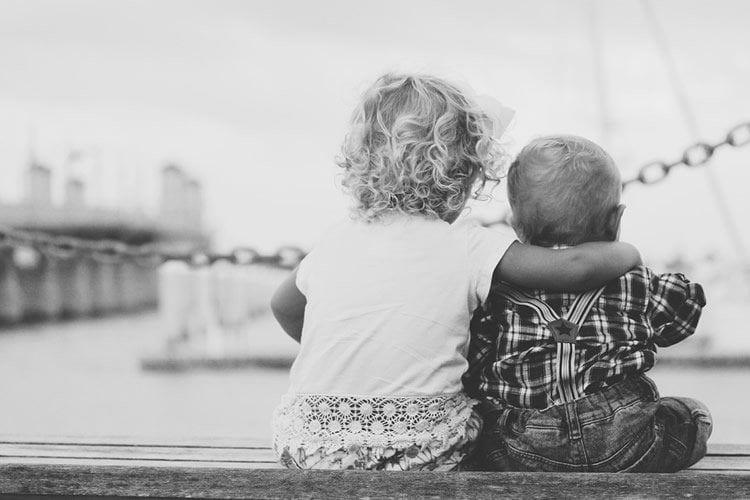Summary: A new study reports children as young as two years old are able to evaluate the opinions of others and will modify their behavior accordingly when others are watching them.
Source: Emory Health Sciences.
Even before toddlers can form a complete sentence, they are attuned to how others may be judging them, finds a new study by psychologists at Emory University.
The journal Developmental Psychology is publishing the results, documenting that toddlers are sensitive to the opinions of others, and that they will modify their behavior accordingly when others are watching.
“We’ve shown that by the age of 24 months, children are not only aware that other people may be evaluating them, but that they will alter their behavior to seek a positive response,” says Sara Valencia Botto, an Emory PhD candidate and first author of the study.
While previous research has documented this behavior in four- to five-year-olds, the new study suggests that it may emerge much sooner, Botto says.
“There is something specifically human in the way that we’re sensitive to the gaze of others, and how systematic and strategic we are about controlling that gaze,” says Philippe Rochat, an Emory professor of psychology who specializes in childhood development and senior author of the study. “At the very bottom, our concern for image management and reputation is about the fear of rejection, one of the main engines of the human psyche.”
This concern for reputation manifests itself in everything from spending money on makeup and designer brands to checking how many “likes” a Facebook post garners.
“Image management is fascinating to me because it’s so important to being human,” Botto says. “Many people rate their fear of public speaking above their fear of dying. If we want to understand human nature, we need to understand when and how the foundation for caring about image emerges.”
The researchers conducted experiments involving 144 children between the ages of 14 and 24 months using a remotely controlled robot toy.
In one experiment, a researcher showed a toddler how to use the remote to operate the robot. The researcher then either watched the child with a neutral expression or turned away and pretended to read a magazine. When the child was being watched, he or she showed more inhibition when hitting the buttons on the remote than when the researcher was not watching.
In a second experiment, the researcher used two different remotes when demonstrating the toy to the child. While using the first remote, the researcher smiled and said, “Wow! Isn’t that great?” And when using the second remote, the researcher frowned and said “Uh-oh! Oops, oh no!” After inviting the child to play with the toy, the researcher once again either watched the child or turned to the magazine.
The children pressed the buttons on the remote associated with the positive response from the researcher significantly more while being watched. And they used the remote associated with the negative response more when not being watched.
During a third experiment, that served as a control, the researcher gave a neutral response of “Oh, wow!” when demonstrating how to use the two remotes. The children no longer chose one remote over the other depending on whether the researcher was watching them.
The control experiment showed that in the second experiment the children really did take into account the values expressed by the experimenter when interacting with the toy, and based on those values changed their behavior depending on whether they were being watched, Botto says.
A final experiment involved two researchers sitting next to one another and using one remote. One researcher smiled and gave a positive response, “Yay! The toy moved!” when pressing the remote. The second researcher frowned and said, “Yuck! The toy moved!” when pressing the same remote. The child was then invited to play with the toy while the two researchers alternated between either watching or turning their back to the child.
Results showed that the children were much more likely to press the remote when the researcher who gave the positive response was watching.
“We were surprised by the flexibility of the children’s sensitivity to others and their reactions,” Botto says. “They could track one researcher’s values of two objects and two researchers’ values of one object. It reinforces the idea that children are usually smarter than we think.”
Botto is continuing to lead the research in the Rochat lab for her PhD thesis. She is now developing experiments for children as young as 12 months to see if the sensitivity to being evaluated by others emerges even earlier than the current study documents.

And she is following the 14- to 24-month-old children involved in the published study, to see if the individual differences they showed in the experiments are maintained as they turn four and five. The researchers are measuring social and cognitive factors that may have predictive power for individual differences — such as language ability, temperament and a child’s ability to pick up on social norms and to understand that people can have beliefs different from their own.
“Ultimately, we hope to determine exactly when children begin to be sensitive to others’ evaluations and the social and cognitive factors that are necessary for that sensitivity to emerge,” Botto says.
Such basic research may translate into helping people in a clinical environment who are at the extremes of the spectrum of such sensitivity, she adds.
“It’s normal and necessary to a certain extent to care about our image with others,” Botto says. “But some people care so much that they suffer from social anxiety, while others care so little that it is not optimal in a society where cooperation is essential.”
Source: Carol Clark – Emory Health Sciences
Publisher: Organized by NeuroscienceNews.com.
Image Source: NeuroscienceNews.com image is in the public domain.
Original Research: Abstract for “Sensitivity to the evaluation of others emerges by 24 months” by Botto, Sara Valencia; and Rochat, Philippe in Developmental Psychology. Published August 2018.
doi:10.1037/dev0000548
[cbtabs][cbtab title=”MLA”]Emory Health Sciences”Toddlers Care What Others Think: Sensitivity to How Others Evaluate You Emerges by 24 Months.” NeuroscienceNews. NeuroscienceNews, 27 August 2018.
<https://neurosciencenews.com/toddler-judgement-others-9751/>.[/cbtab][cbtab title=”APA”]Emory Health Sciences(2018, August 27). Toddlers Care What Others Think: Sensitivity to How Others Evaluate You Emerges by 24 Months. NeuroscienceNews. Retrieved August 27, 2018 from https://neurosciencenews.com/toddler-judgement-others-9751/[/cbtab][cbtab title=”Chicago”]Emory Health Sciences”Toddlers Care What Others Think: Sensitivity to How Others Evaluate You Emerges by 24 Months.” https://neurosciencenews.com/toddler-judgement-others-9751/ (accessed August 27, 2018).[/cbtab][/cbtabs]
Abstract
Sensitivity to the evaluation of others emerges by 24 months
Although the human proclivity to engage in impression management and care for reputation is ubiquitous, the question of its developmental outset remains open. In 4 studies, we demonstrate that the sensitivity to the evaluation of others (i.e., evaluative audience perception) is manifest by 24 months. In a first study, 14- to 24-month-old children (N = 49) were tested in situations in which the attention of an audience was systematically manipulated. Results showed that when the experimenter was inattentive, as opposed to attentive, children were more likely to explore an attractive toy. A second study (N = 31) explored whether same-aged children would consider not only the attention of the experimenter but also the values the experimenter expressed for two different outcomes when exploring a toy. We found that children reproduced outcomes that were positively valued by the experimenter significantly more when the experimenter was attentive but were more likely to reproduce negatively valued outcomes when the experimenter was inattentive. A third control study (N = 30) showed that the significant effect of Study 2 disappeared in the absence of different values. Lastly, Study 4 (N = 34) replicated and extended the phenomenon by showing toddler’s propensity to modify their behavior in the presence of 2 different experimenters, depending on both the experimenter’s evaluation of an outcome and their attention. Overall, these data provide the first convergent demonstration of evaluative audience perception in young children that precedes the full-fledged normative, mentalizing, and strong conformity psychology documented in 4- to 5-year-old children.






